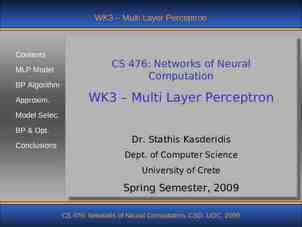Value of Systems Engineering INCOSE Data 1
6 Slides232.00 KB
Value of Systems Engineering INCOSE Data 1
Heuristic Claim of SE Better systems engineering leads to Better system quality/value Lower cost Shorter schedule Traditional Design SYSTEM DETAIL PRODUCTION DESIGN DESIGN INTEGRATION Risk Time TEST Risk “System Thinking” Design Saved Time/ Cost Time2
NASA Tracking 1980s Impact of “Front-End” Investment Pre-Cost Commitment Investment vs. Total Cost Growth % COST GROWTH OVER TOTAL ESTIMATE 140% 120% Total Program Overrun 32 NASA Programs 100% 80% ERBE 60% 40% 20% COBE 0% ISEE IUE -20% 2% 4% 6% 8% % Investment in System Engineering Effort (SEE) 10% 12% Source Werner Gruhl NASA Comptroller’s Office 3
Time-Phased Sensitivity of SE to Total System Life Cycle Cost % Commitment to Technology, Configuration, Performance, Cost, etc. 100 75 Cost Incurred 50 System-Specific Knowledge 25 Ease of Change N Detail Construction E ConceptualDesign and And/or E Preliminary Design Development Production D System Use, Phase out, and Disposal Commitment, System-Specific Knowledge, and Cost Systems Engineering is important early in a program to influence the design when 4 incurred costs are low and design changes are easy.
Concept and Technology Development Conceptual System Design Phase High Preliminary System Design Phase Detail Design and Development Phase Systems Engineering Design Influence Individual Design Disciplines Low Systems Design and Development Progress Systems Engineering is important early in a program to influence the design when incurred costs are low and design changes are easy. 5
Conclusions SE effort improves development quality Cost, schedule, subjective Hypothesis is supported by the data Optimum SE effort is 10-15% Matches data from NASA projects Cost, schedule overruns are minimized However, note wide dispersion of data Quality of the SE effort matters Lower quality SE reduces effectiveness 6











